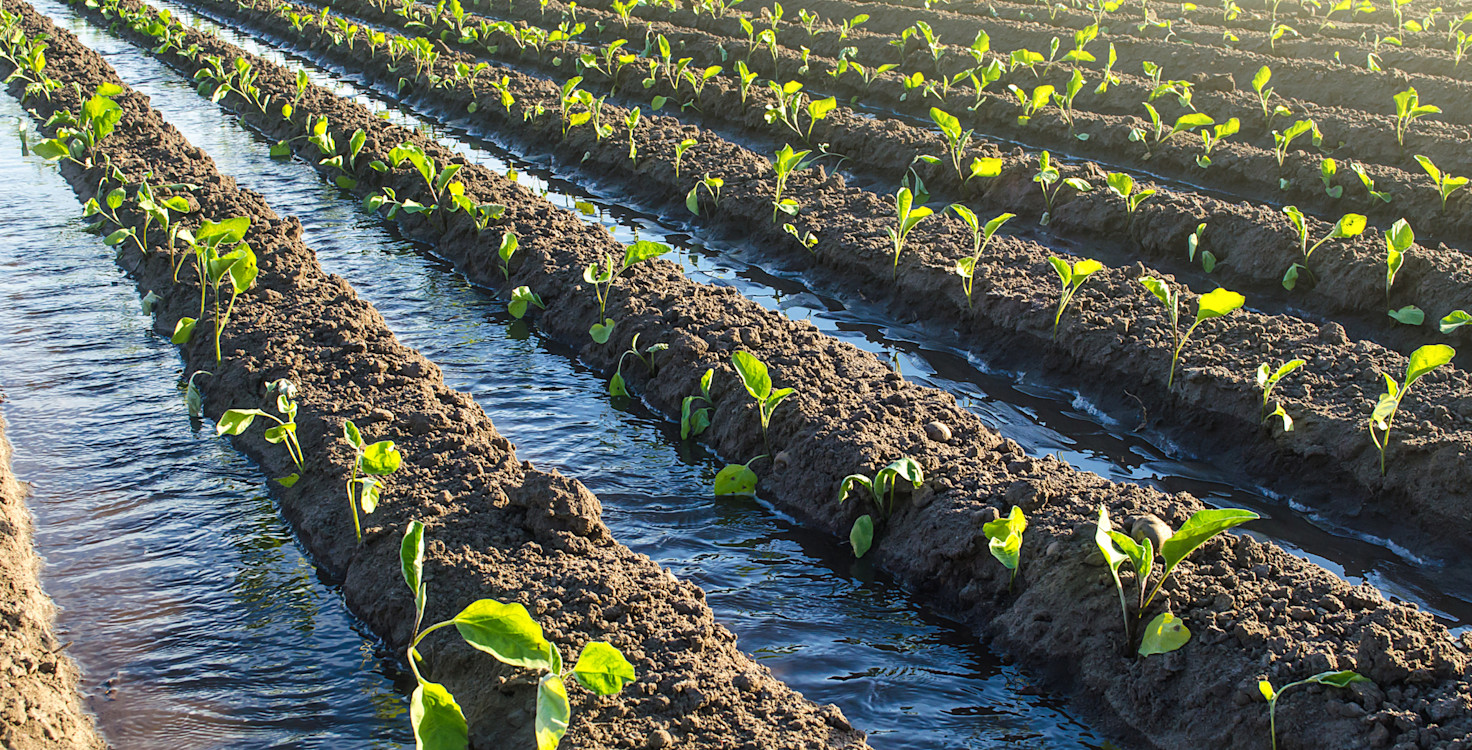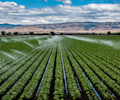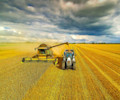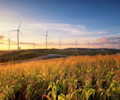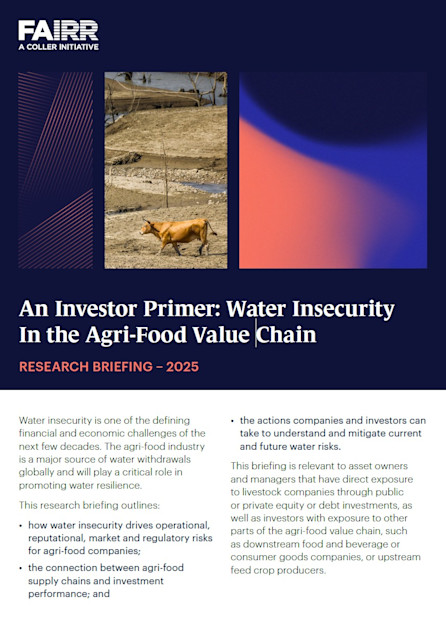Animal agriculture is a water-intensive industry and is therefore vulnerable to water scarcity. This article outlines the impacts of water use and scarcity, and the material risks these can create for investors.
Water use in the animal agriculture industry
The animal agriculture industry uses 30% of the planet’s freshwater resources. Volumes of water used vary according to livestock species, with beef being the most water intensive. Water embedded in animal proteins include the water used in feed farming, which accounts for 98% of usage, and water used during animal farming, slaughtering and processing operations.
Around 15,000 litres of water are needed to produce one kilogram of beef, and 4,000 litres for one kilogram of poultry. This dependency on water makes the sector vulnerable to drought and extreme weather events.
The impact of water scarcity on agriculture
As climate change exacerbates droughts and water scarcity in some regions, the ability of protein producers to operate will be impacted by water availability in areas that have medium or high levels of water stress.
The short-term physical impacts of water scarcity include reduced productivity from interrupted operations at processing plants and higher feed costs from lower yields, while the long-term consequences will include soil erosion and higher livestock mortality. In many regions, animal protein producers already compete with communities and other industries for water, and some predict that this will worsen as demand for water increases with a growing world population.
Instances of drought and hot weather in the American West and Europe in recent years have impacted the sector in multiple ways, increasing feed prices and scarcity, limiting production, and leading to job losses and other economic impacts. Between 2023 and 2024, 52 individual prolonged meteorological drought events occurred, according to the EU’s Joint Research Centre. As well as causing heatwaves and warm periods, they affected crop productivity across Europe, Southern Africa, Central and Southern America, and Southeast Asia.
Water use regulations, standards and frameworks
Effective water stewardship is increasingly critical for protein producers operating in water-intensive sectors such as livestock farming and aquaculture.
Legal frameworks
Across regions, protein producers face a range of legally binding regulations aimed at protecting freshwater ecosystems and ensuring responsible water use. These include:
Water abstraction licensing to control the volume of water withdrawn from natural sources.
Effluent discharge standards that regulate the treatment and release of wastewater to avoid contaminating water bodies.
Compliance monitoring and public reporting requirements that push companies to account for their water footprint and associated risks.
These legal frameworks are often enforced by national environmental authorities and are increasingly linked to broader environmental impact assessments, particularly in water-stressed regions.
Voluntary water stewardship standards
To go beyond compliance and demonstrate environmental leadership, protein producers may adopt voluntary water stewardship standards. Notable frameworks include:
Alliance for Water Stewardship Standard: A globally applicable certification promoting responsible water use at the site level, with an emphasis on stakeholder collaboration and basin-level outcomes.
GlobalG.A.P.: An assurance standard for good agricultural and aquaculture practices, covering water efficiency, contamination control, and ecosystem protection.
CDP Water Security Disclosure: Encourages corporate transparency on water-related risks and actions, aligning with investor expectations and ESG benchmarks.
Water stewardship for protein producers is evolving rapidly. Key trends include:
Catchment-based management approaches, focusing on shared water challenges across watersheds.
Science-based targets for water, as developed under the Science Based Targets for Nature initiative and others, which provide quantitative goals aligned with ecosystem thresholds.
Technology-enabled water innovation, such as smart irrigation, closed-loop aquaculture systems, and water recycling technologies that increase efficiency and reduce dependency on freshwater inputs.
Why is water use and scarcity a material financial risk for investors?
Investors that do not account for water risks could be misallocating capital by overpaying for assets that may underperform financially due to increased material impacts from higher feed costs, operational supply chain disruptions and tougher environmental regulations. CDP analysis has estimated that the potential impact of inaction on water risk for the food, beverage and agriculture sector is US$19.5 billion, while the cost of responses to address these risks would be much lower – US$1.1 billion.
The Coller FAIRR Protein Producer Index examines whether a company is assessing and managing its exposure to water scarcity risks in its processing facilities, feed and animal supply chains. Companies are encouraged to identify high-risk locations, set risk-differentiated targets for water consumption and withdrawals, and engage with suppliers to manage water risks.
More advanced practices include year-on-year improvements for processing facilities, including an overall decrease in water consumption and withdrawals. To further reduce their risk exposure, companies can also provide comprehensive guidance, technical support and incentives to suppliers to improve water use at animal and feed farms.
Assessments, targets and policies
Granular, location-specific data is important for investors and companies to identify high-risk areas and understand and manage their water risk exposure effectively.
To reduce and mitigate risks, companies can conduct a water risk analysis and set targets according to the water-stress levels of their operations. It is important for companies to have a sustainable agriculture policy that addresses water use in their animal-farming and feed-farming operations.
Aquaculture companies, particularly the salmon producers assessed within FAIRR’s Index, differ from land-based protein producers in their freshwater usage because a large period of production occurs at sea. As such, most water use occurs at the earlier stage of smolt production and then processing. Water is also needed to grow aquaculture feed.
Animal protein producers are encouraged to provide comprehensive guidance and support to suppliers and growers to improve water use at animal and feed farms.
Summary
Animal agriculture has a significant water footprint and extreme weather events in recent years have highlighted the sector’s vulnerability to drought and water scarcity. Accounting for water risks is an essential part of any investment strategy in the sector.
Reference
[1] Water Footprint Network. (n.d.). What can consumers do? Retrieved November 3, 2025.
[7] Weise, Z., & Zimmermann, A. (2023, April 28). Europe’s next crisis: Water. POLITICO.
[9] Water News Europe. (2023). Europe: Companies required to disclose water use.
[11] SIWI, UNICEF, WHO, & IADB. (2023). The WASHREG Approach: Action Sheets. Stockholm and New York.
[13] GLOBALG.A.P. (n.d.). Standard setting for responsible farming. Retrieved November 3, 2025.
[14] CDP. (n.d.). Water security disclosure framework. Retrieved November 3, 2025.
[15] Science Based Targets Network. (2025). Freshwater targets: Step 3 guidance.
[16] Catchment Based Approach. (2018). Working together for a healthy water environment.
